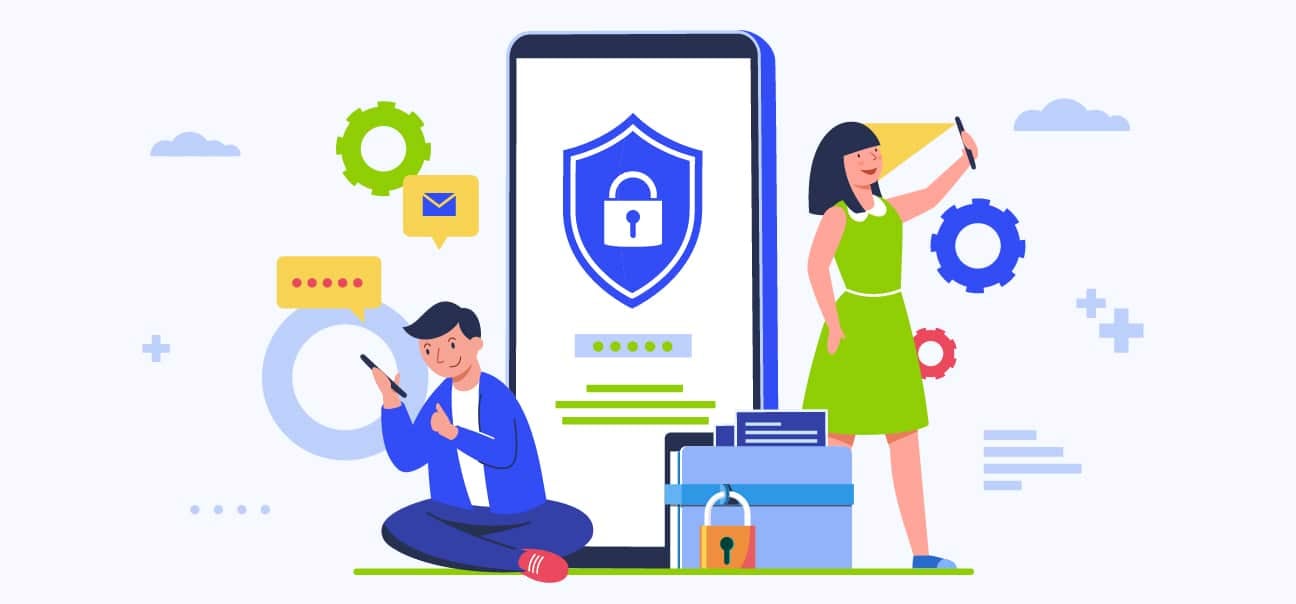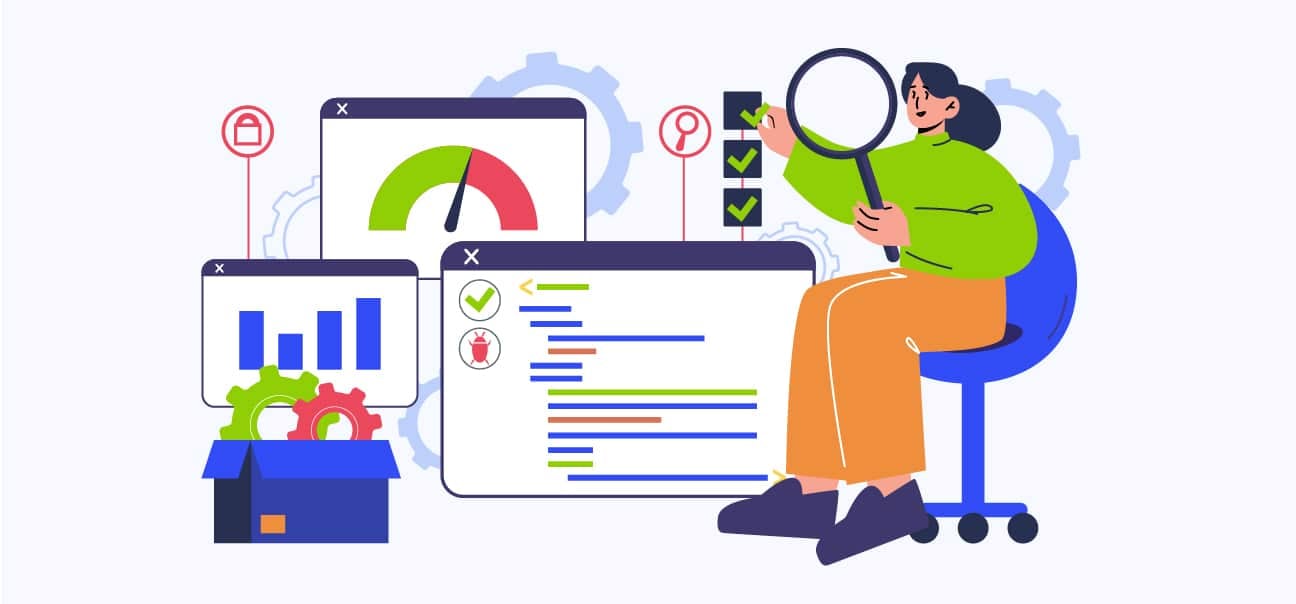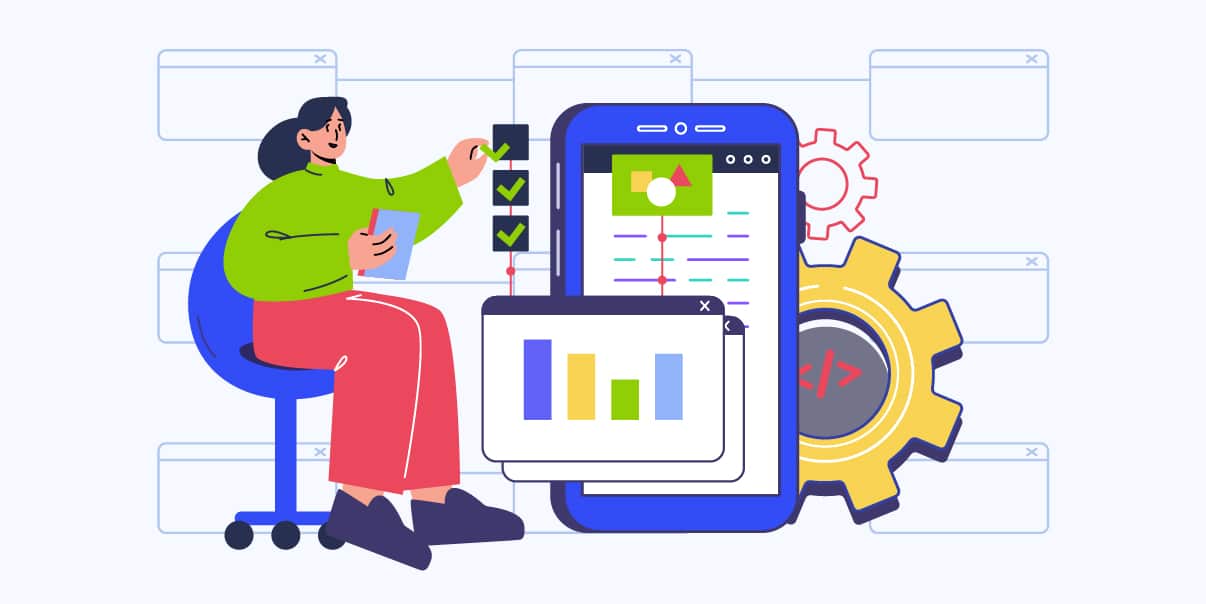Mobile App Security Best Practices
How to Shield Your App from Threats

Mobile applications have become an essential for many businesses in a world where mobile devices dominate the digital landscape. However, securing these apps presents numerous challenges, stirring up worry and uncertainty among developers and enterprises.
With the increasing prominence of mobile apps in business operations, these concerns can no longer be swept under the rug.
Given the current digital climate, we’ve seen a rise in both the sophistication and frequency of cyberattacks. This frequency underscores the importance of adopting mobile app development services with a focus on security best practices to protect your app and, ultimately, your business.
The following article will help you understand mobile app threats, implementing key security best practices, and applying these concepts to different business needs. Whether you are an app developer, a business owner, or an end-user, this blog aims to equip you with the tools to better protect your mobile applications from the increasing and ever-evolving threats of the digital world.
The Importance of Mobile App Security
Mobile app security has evolved from an optional feature to an absolute necessity. As mobile app usage continues to grow, so do the threats posed by cybercriminals. Without an effective security strategy in place, businesses are at risk of losing crucial customer information and sensitive data.
Benefits of Implementing Robust Mobile Application Security Measures
Implementing robust security measures is not just about avoiding cyberattacks. It also entails many benefits.
- User Trust
Users who feel that their personal details are safe are more likely to use your app. A robust security protocol signals that you value user safety, fostering trust and loyalty among your user base.
- Financial Security
Cyberattacks can result in heavy financial losses. The cost can be substantial, from compensating users for data theft and breaches to losing business due to a damaged reputation. Having secure mobile apps can shield you from these unwanted financial setbacks.
- Legal Compliance
With increasing concerns about user privacy, many jurisdictions have strict data protection laws. Ensuring data security prevents potential legal penalties associated with non-compliance.
- Competitive Advantage
A secure app also gives you an edge in the highly competitive app market. Users will likely choose an app that prioritizes security over one that doesn’t, making strong app security a key differentiator.
- Business Continuity
Security breaches can lead to service interruptions, causing user dissatisfaction and financial loss. Robust security measures help ensure smooth business operations, contributing to business continuity.
A security-focused mindset is an invaluable trait in app developers. Think of it as constructing a building. If the foundation is weak, the whole, entire structure is prone to collapse. Similarly, an app becomes susceptible to various security issues without a security-oriented perspective. It’s like leaving the doors of your house wide open, inviting unwanted intruders in.
Understanding Mobile App Threats
Understanding the threats that loom over mobile applications is crucial in strengthening their security. Here are some common threats and how they can compromise your business:
Malware
This software is designed to damage or gain unauthorized access to your app. An example is the infamous “Judy” malware that infected up to 36.5 million Android devices in 2017, generating fraudulent ad clicks. Such threats hurt your app’s reputation and can lead to substantial financial loss.
Data Leakage
This threat typically occurs when your app unintentionally exposes sensitive or private data. Data leakage is like accidentally leaving confidential documents on a bus. For example, in 2020, the Zoom app faced criticism for leaking user data to third parties. Such breaches can erode user trust, leading to customer churn and potential legal repercussions.
Unsecured Wi-Fi
Users often connect to public Wi-Fi networks, which hackers can easily exploit. Hacking is like opening a backdoor for burglars. Your users’ sensitive data can be intercepted and misused, damaging your business reputation.
Phishing Attacks
These involve tricking users into divulging personal information. A well-known case was the “Gooligan” attack, which tricked users into downloading malicious apps and gaining access to their Google accounts. A phishing attack not only harms your users but can also cause significant brand damage.
Weak User Authentication
This threat refers to inadequate verification of a user’s identity. For instance, an app that only requires a simple password for login is susceptible to brute-force attacks, where hackers try different password combinations until they get it right. A successful attack could give hackers control over user accounts, risking user data and trust.
Insufficient Cryptography
This issue happens when an app fails to correctly encrypt confidential data, making it easier for hackers to decipher. It’s akin to leaving a key under the doormat; anyone who knows where to look can find it. Insufficient cryptography could lead to data breaches, hurting your app’s credibility and user trust.
By comprehending these threats, you clearly understand what you’re up against. With this knowledge, you can construct a formidable defense to further protect sensitive data, your app, and your business.
Best Practices in Mobile App Security and How to Implement Them
As we delve into the heart of mobile app security, let’s examine the key practices that can fortify your app against the threats we’ve discussed:
Secure Coding
Secure coding is the first, and perhaps most significant, step in building a secure app. It refers to writing code that prevents security vulnerabilities, reducing the potential for exploitation. Secure coding involves following established guidelines like those from the Open Web Application Security Project, or OWASP. For example, programmers should validate user inputs to protect against injection attacks, a method hackers use to introduce malicious code, as in the Sony PlayStation Network breach in 2011. Therefore, secure coding is the first, and perhaps most significant, step in building a secure app.
Encryption
Encryption serves as a powerful shield, protecting data from prying eyes. It’s a process that converts readable data (plaintext) into coded text (ciphertext) which those with a decryption key can only access. The developer should encrypt sensitive data like user details and passwords in mobile applications. A good example is WhatsApp, which uses end-to-end encryption. Only the intended recipients can read the data, preventing third-party interference. Encryption is a potent tool that can significantly enhance the security of your app’s data.
Regular Updates and Patches
Just as one needs to maintain a car to run smoothly, mobile applications require regular maintenance through updates and patches. Cyber threats constantly evolve, discovering new vulnerabilities to exploit. Regular updates equip your app with the necessary defenses against these emerging threats. Regularly updating and patching your app is thus akin to adding reinforcements to your fortress, ensuring it remains strong against evolving threats.
Multi-factor Authentication (MFA)
Passwords alone are not enough to protect accounts from unauthorized access. MFA adds extra security by requiring users to verify their identity using two distinct methods before they can gain access to their accounts. A good analogy is a bank vault that requires both a key and a code to open. Even if a password is compromised, the likelihood of breaching an account is significantly reduced with MFA.
API Security
APIs, or Application Programming Interfaces, are gateways through which different software applications communicate. While APIs are vital to app functionality, they can serve as potential entry points for attackers if not secured properly. Securing APIs involves implementing token-based authentication, where a token verifies the requester’s identity, validates all input to prevent malicious data from entering your system, and carefully manages HTTP methods to control access to data.
Code Obfuscation and Tampering
To secure a mobile app, developers often turn to code obfuscation. This practice involves modifying the app’s code to make it difficult for a potential attacker to understand and manipulate it. By hiding the app’s inner workings, code obfuscation makes it harder for hackers to find vulnerabilities and exploits. Many banking apps, for example, employ this technique to keep their clients’ financial information safe. On the other hand, code tampering protection ensures that your source code remains unchanged and functions as intended, safeguarding your app from threats.
Proper Session Handling
Every user interaction with an app is part of a ‘session.’ Efficient session handling means managing these user sessions to minimize security risks. Session handling involves session timeout, where sessions automatically end after a period of inactivity, preventing someone from gaining unauthorized access if the user’s device is left unattended. The 2012 LinkedIn data breach, involving the theft of millions of passwords, was partly attributed to improper session handling, underscoring the need for secure session management in protecting user data.
Security Testing
Mobile App Security Testing is a pivotal best practice. It involves using Static Application Security Testing (SAST) to check code for flaws, akin to proofreading a book. Dynamic Application Security Testing (DAST) tests the app’s running state, like reviewing a play’s performance. Meanwhile, Interactive Application Security Testing (IAST) combines both, identifying complex vulnerabilities during runtime. These security testing methods fortify your mobile app, protecting your business and customers from potential threats. As the final line of defense before deployment, security testing is indispensable.
Security in the Context of Various Business Needs
One-size-fits-all security strategies often fall short. Specific app categories demand unique security practices.
B2C Mobile Apps
B2C apps often house a treasure trove of sensitive user data, making them prime targets for data breaches. These apps must balance personalization, which usually requires access to user data, with privacy, a top concern for most users. B2C apps must prioritize user data privacy, secure transactions, and employ security measures like strong encryption and regular security updates.
B2B Mobile Apps
These apps often contain sensitive information, corporate data, and intellectual property, making secure data transfer and robust authentication critical. B2B apps commonly face threats like data leakage and insecure data storage. Secure coding and API security are crucial practices in thwarting these threats.
E-commerce Mobile Apps
E-commerce apps are particularly susceptible to data breaches and credit card fraud due to the nature of their transactions. They must secure payment gateways, detect fraudulent activities, and maintain user trust.
Enterprise Mobile Apps
Such apps, used by large corporations, often encounter threats like data leakage and weak user authentication. They must protect enterprise data, comply with regulations, and ensure secure employee authentication.
Recognizing the distinct security needs of each business type is the first step to customizing an effective app security strategy. Each category has unique threats, and you must implement corresponding measures to combat them effectively.
Conclusion
Mobile apps have become integral components of our daily lives and businesses across the spectrum. However, this increased connectivity comes with a variety of security challenges. These threats pose significant risks to companies and their customers.
Adopting proper security measures is essential to protect your mobile app from threats. Different security considerations apply depending on the nature of the app – B2C, B2B, e-commerce, or enterprise.
Staying updated with the latest security best practices is critical as cyber threats evolve. It’s a continuous learning process. The cost of a breach far outweighs the investment in prevention.
If you’re looking for a custom mobile app development company to ensure mobile app security, contact us at BIT Studios. Our team of experts has the latest tools and knowledge to shield your app from threats and safeguard your business. Remember, in today’s digital world, your mobile app’s security is no longer an option; it’s a necessity.
We’re BIT Studios!
At BIT Studios we specialize in designing, building, shipping, and scaling beautiful, usable products with blazing-fast efficiency



